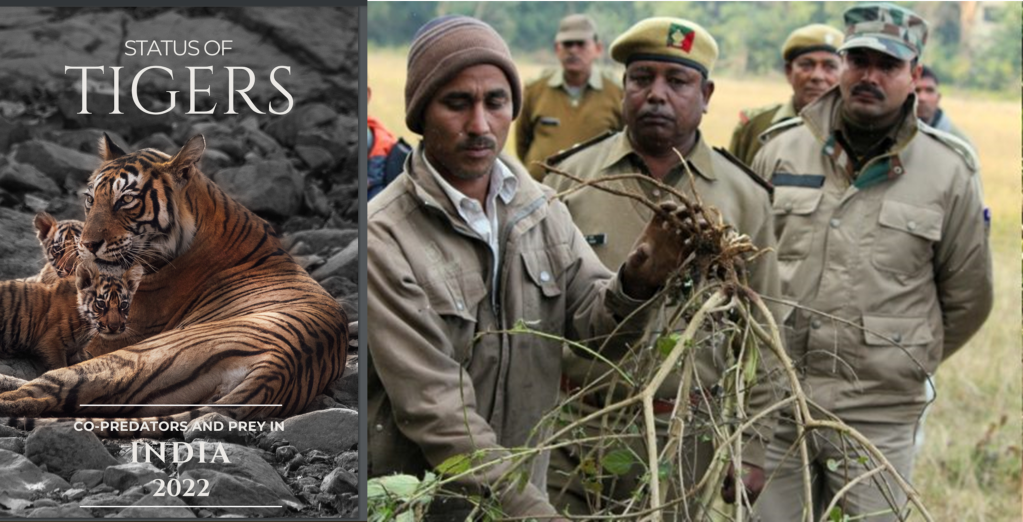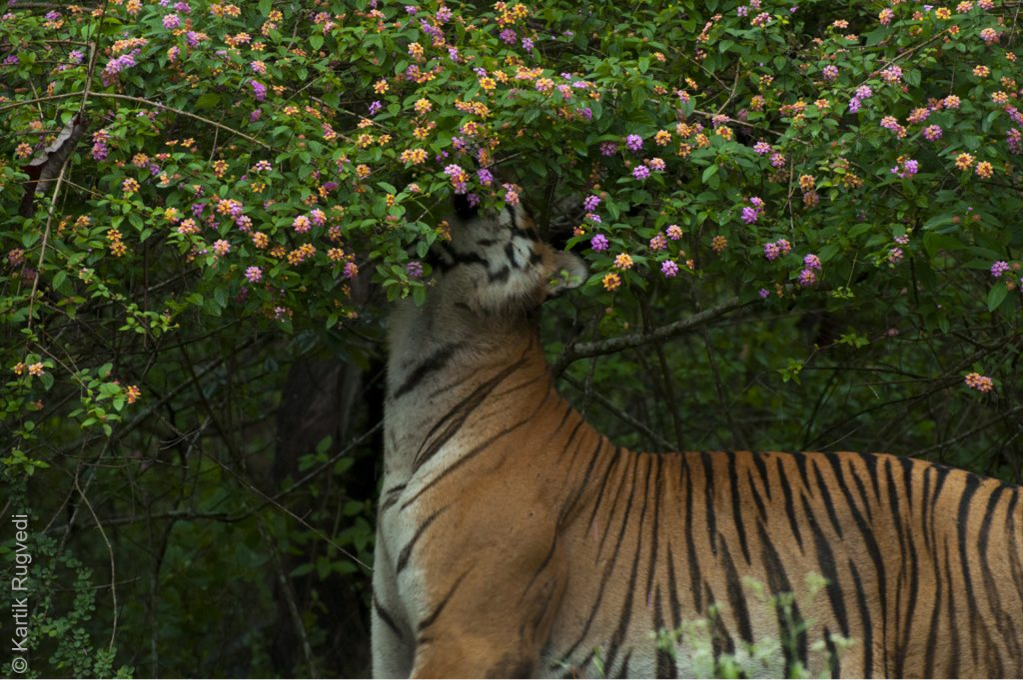Ninad Mungi shares recent work, conducted with colleagues, which involved monitoring India’s levels of invasive plant species. This has knock-on effects for apex predators, such as tigers, who rely on their prey being able to access native species.
Introduction
In a world grappling with drastic ecological challenges, biological invasions have emerged as a pernicious threat to biodiversity, ecosystem functioning, and global health. While the impacts of invasive species are increasingly recognized, our understanding of their distribution and the mechanisms driving their proliferation remains limited.
This knowledge gap hampers effective intervention strategies, exacerbating the ecological consequences. Thus, this new research sheds light on the extent of this problem in India and offers insights into how the country is addressing it.

India’s unique challenge and monitoring
India, a megadiverse region, faces a pressing need to combat invasive species. The survival of apex predators, such as tigers, hinges on abundant herbivores – which in turn depend on habitats free from the negative impacts of plant invasions. Proliferation of invasive plants jeopardizes these delicate ecosystems, threatening trophic structures with far-reaching impacts on economy, and livelihoods of indigenous communities.
To counter biological invasions, India launched an ambitious invasive species monitoring initiative as part of its overarching national tiger monitoring project. This inventive approach has dual benefits of offering a cost-effective assessment of invasive species while encompassing a broader ecological monitoring of fauna, flora, and human impacts.
Employing customized mobile applications, this data is collected and supplemented with photographic evidence to build a comprehensive national digital database. The published study used data from year 2018, where >158,000 plots were sampled covering >380,000 km2 natural areas. A staggering 72% of sampled areas were invaded by at least one high-concern invasive plants, potentially threatening 66% of India’s natural areas.
The image to the right shows the chronology of methods used in the study: encompassing systematic biodiversity survey of all natural areas in the tiger range of India (A) using MSTrIPES mobile apps customized for biodiversity monitoring (B). This resulted in one of the largest assessments of invasive plants covering 358,000 km2 (C) and showed that around 66% of India’s natural areas were invaded by high-concern invasive plants (D). The study used prevalence of invasive plants and native biodiversity to develop restoration priority for managing invasive plants and maximizing biodiversity returns (E).
Findings and implications
The results of the study are equally revealing and alarming. India’s legacy of human modifications, historical propagation of invasive plants, shifting soil moisture regime, and altered cycles of natural disturbances are amongst the leading drivers that likely facilitate invasions.
With the world’s highest population density, the consequent demand for food, energy and infrastructure through socio-ecological drivers is only likely to intensify, potentially escalating the already rampant invasions. Active invasion management and biodiversity restoration is thus critical and urgent.

The study provides a strategic restoration priority pathway for India, one that safeguards areas where invasions are in their initial stage. Such areas require relatively less investments and less interventions but are promising in terms of biodiversity returns. This model identifies high-priority restoration sites within protected areas (in total 11%), followed by subsequent priority sites that aim to establish extensive “intact” native regions.
A way forward
While this study provides a critical steppingstone towards evidence-based restoration, several challenges persist. This study highlights that managing invasive species demands more than mere removal — it necessitates stakeholder participation, context-sensitive restoration, and adaptive policies. India must now:
- utilize the restoration priority model as a benchmark for achieving restoration goals
- invest in scientific methods for controlling invasions and restoring biodiversity
- develop evidence-based adaptive guidelines for invasive plant management
- extend the present framework to monitor invasive species in various ecosystems, such as freshwater and islands
- conceive a national policy on invasive alien species.
Mixed communities emerging from native and invasive species seems to be a long-term reality for India, and the two are seen interacting in novel ways. There is also a necessity to understand the potential of emerging novel ecosystems harnessing positive effects of alien species.
Silver linings
Despite the prevalence of invasions in India, core protected areas which are insulated from human modifications displayed native species predominance. If this biodiversity is restored and strengthened in time, it can reinforce natural resistance to future invasions and reinforces ecosystem resilience.
As we navigate the United Nations’ decade for Ecosystem Restoration, India’s proactive stance in monitoring invasive species offers a model for other regions facing similar challenges. This approach integrates the invasive species assessment into broader biodiversity monitoring, setting a precedent for responsible and forward-looking conservation efforts. Amidst densely populated regions, this research paves a path towards effective restoration, rekindling our ecological optimism.
Read the full article “Distribution, drivers, and restoration priorities of plant invasions in India” in Journal of Applied Ecology

